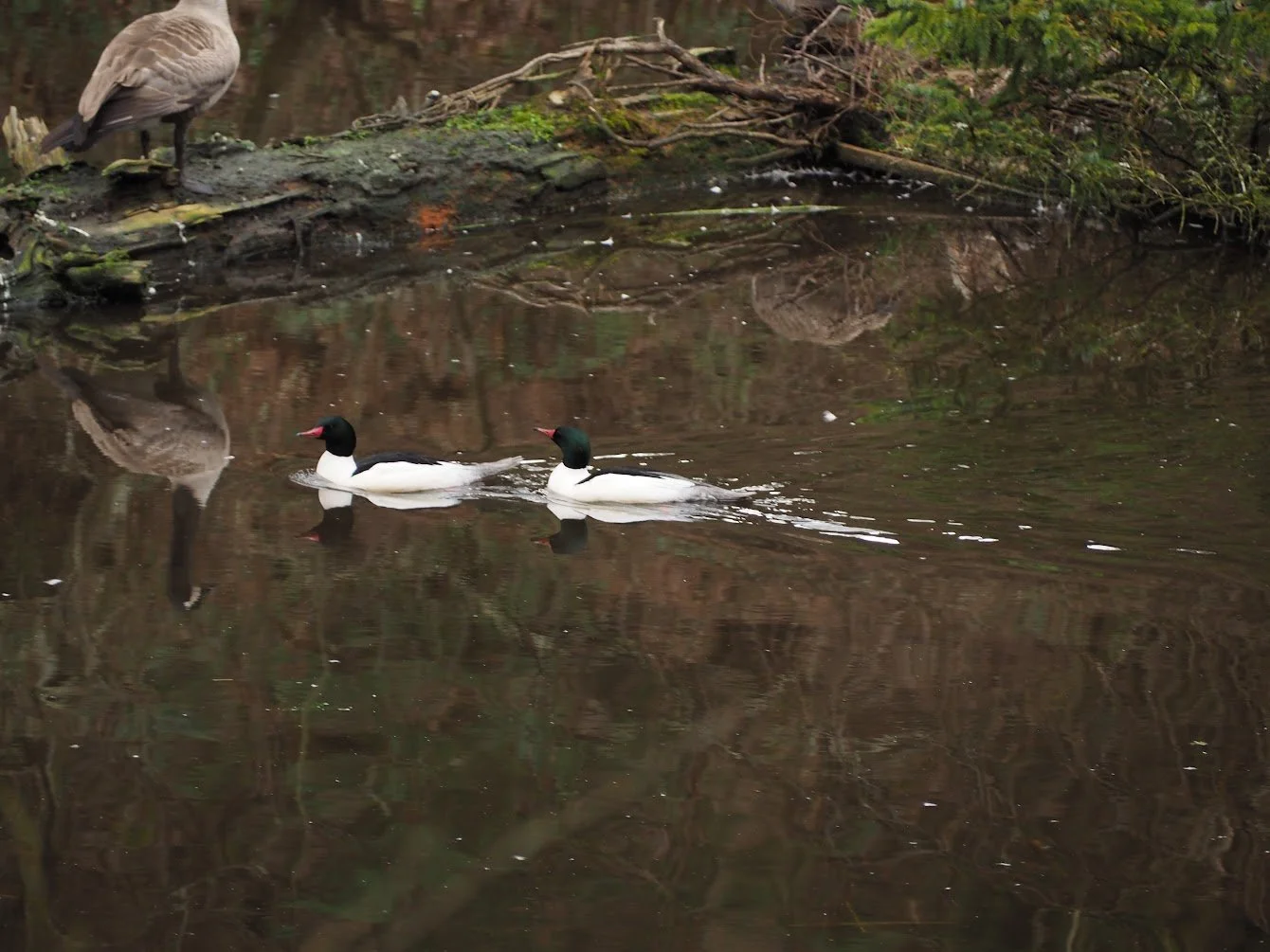Bird of the Week: Common Merganser
Photo by Albert Kerelis
Species: Common Merganser, or Mergus merganser
Family: Anatidae (waterfowl, i.e. ducks, geese, and swans)
Star sign: Virgo
Rating: 14/10
Ideal Date: Duck Violence
Common Mergansers are, as the name implies, common. These large and distinctive friends can be found all over the northern hemisphere throughout North America, Europe, and Asia (call this friend Mr. Worldwide, because it lives all across the globe). But common does not mean boring, and this delightful duck is anything but boring. Mergansers such as this week's friend (as well as the flamboyant Hooded Mergansers that can be found year-round in the Canyon) are the only ducks that specialize in eating fish! Their pointy, serrated bills, so different from the flat rounded bills of most ducks, allow them to rip and tear into the flesh of fish. What a delightfully useful adaptation! It’s so useful, it’s also been known to help them eat aquatic invertebrates, plants, frogs, small mammals, and other birds.
These fantastic fishers have a well-earned reputation for their skill. Gulls have been known to follow Common Mergansers around, and when the ducks surface they swoop down and swipe their food! It’s nice to know that us humans aren’t the only apex predator that gulls like to harass. And even the regal Bald Eagle steals from this friend, which is honestly in character for a bird that represents America. Their status as apex predators also means that they make fantastic indicators as to the environmental health of water bodies. If the Mergansers aren’t eating well, then the fish aren’t living well.
Since the Common Merganser is so common, it has many different names. In Eurasia it is known as the Goosander, and it is a travesty that such a whimsical name hasn’t carried over to the United States. That said, we do have our share of fun, American names. Here, they’re known as sawbills, fish ducks, and sheldrakes. And even their actual name has an exciting origin — the word “Merganser” is derived from the Latin for “plunging goose.” What a fun, albeit taxonomically inaccurate, way of describing this friend!
Although the Common Merganser is Mr. Worldwide, it’s only an infrequent visitor to our beautiful campus, since it prefers to spend its time surfing large, open bodies of water. If you do see one, though, it’s fairly easy to identify. Males have striking dark green heads, paper-white bodies, and jet-black backs; females have grey bodies with white chests, and cinnamon-colored heads with feathery crests. Both have narrow, serrated red beaks with hooked tips. This friend is a Big Boy, even larger than a mallard, and it has a low profile with a very long body as it sits in the water, and can often be seen diving for food. He may not be a goose, but he sure does plunge!

